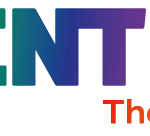We all know that the last eighteen months have been challenging like never before, and that universities up and down the country have responded at pace. While the onset of COVID-19 during the Spring 2020 term sent students home to engage with new or revamped online learning platforms, the Autumn term brought a range of responses. Some universities returned fully in person, some remained fully online and others practised varying degrees of both.
At PebblePad, we believe it’s unlikely the sector will want to, or even will be able to, put the genie entirely back in the bottle when it comes to online provision – it’s delivered significant benefits in terms of flexibility, accessibility and ability to measure progress.
What will this mean for your studies?
So, while you’re right to assume that you’ll be spending plenty of time back on campus in the year ahead, your university is likely to make good use of online learning approaches. Hybrid learning is likely to be the order of the day for the long term.

You’re also likely to see a sharp focus on structure. In our conversations with learners and educators during the pandemic, there was a sense that there was plenty of online content to refer to and consume, but a shortage of structure to help learners make sense of how the various pieces fitted together. The focus for educators moving forward will be to better structure the learning journey for the student, to set expectations, lay out goals, and signpost achievements – and then staying closely connected to you from day one of that journey.
Empowerment will be another watchword in the year ahead. While structure (certainly in the early days) will be provided by your university, it’s likely your teachers and subject leaders will want you to be able to control when and how you learn, helping you gain those vital (and transferrable) critical thinking and independent study skills.
One major challenge during the pandemic was in keeping students connected – to the university, tutors and studies, and crucially, to one another. Universities know that when students work together their performance is enhanced, and the challenge now is keeping those connections active and productive while combining on campus learning with online studies. You’re likely to see an increase in collaborative technologies, designed to keep you in touch with your tutors and your peers.
So, there’s plenty of movement ahead for the student body of 2021 and beyond.
Ultimately, the pandemic confronted universities with the urgency and inevitability of digital transformation, and tech was front and centre of learning since day one of lockdown. At PebblePad we think it’s likely we’ll see a hybrid learning approach winning out – with a focus on investing in tech which supports problem-based learning and skills development … all the kinds of activities that show not just what you know, but how you use and apply that knowledge – crucial for your ultimate success.
Written by Sam Blyth at PebblePad
















